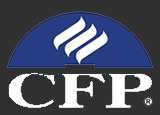January 16, 2019
Welcome to our first newsletter of 2019. While I would not want to wish my life away, I am glad to put 2018 in the rear-view mirror. Leaving December was like finally getting around that slow-moving truck you’ve been stuck behind for the last 10 miles.
As far as markets go, Decembers are a bit strange anyway. Advisors around the country are selling losers for tax-loss harvesting. Mutual Funds and ETF’s must declare and pay-out their Capital Gains in December which increases cash balances but MF fund balances fall. Then lastly, no advisor or institutional investor really wants to reach down to buy any position in December that had negative issues during the year. (They know the position will appear on the December statement and there is little reason to create more investor consternation in an already poor year. This is window dressing in reverse.)








